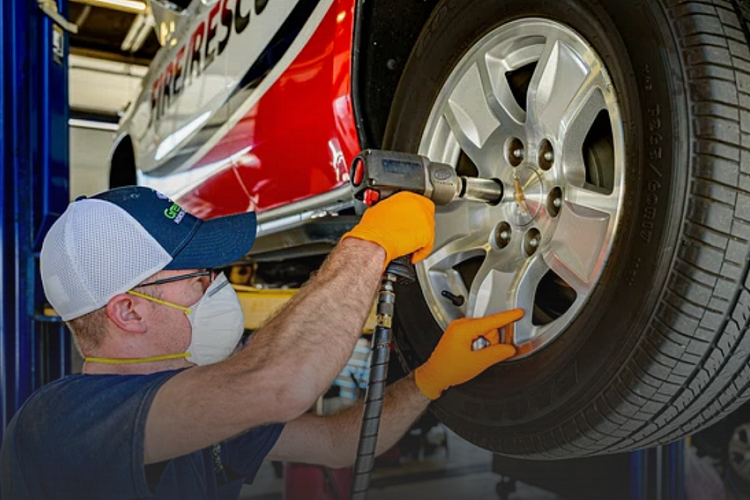Wheel alignment, also known as tire alignment, refers to the adjustment of the angles of the wheels relative to each other and the vehicle’s frame. It is an important maintenance procedure that offers several benefits.
You are aware that your car requires service every few thousand miles. But what about the wheels? This service is often ignored, but it has a lot of great benefits, such as saving money on gas, making the ride smoother, and making the car safer.
It’s important to note that wheel alignment should be performed by a qualified technician using specialized equipment. Regular inspections and maintenance, including wheel alignments, are crucial for maintaining the overall performance, safety, and longevity of your vehicle.

Benefits of Wheel Alignment
Here, we’ll talk about all the benefits of wheel alignment, which includes making changes to your car’s suspension system, which is the part that connects the car to the wheels.
1. Fuel Efficiency
According to Investopedia, misalignment can reduce the gas economy by up to 10%. Misaligned tires drag instead of moving smoothly. So, if your tires aren’t aligned right, you could be using more gas and paying more money. A wheel alignment could help you save gas and reduce how often you have to fill up.
Misaligned wheels can increase rolling resistance, causing the engine to work harder and consume more fuel to maintain the same speed. Proper wheel alignment reduces rolling resistance, allowing your vehicle to move more efficiently. As a result, you may experience improved fuel economy and reduced expenses at the pump.
2. Improved Handling and Safety
If your car’s wheels aren’t lined up right, it will be harder to turn. You might even have to hold the steering wheel at an odd angle or swerve from side to side to keep the car going straight. This lack of control makes it more likely that you will get into an accident. If your wheels are properly aligned, you can avoid these problems and keep a firm grip on your car.
Proper wheel alignment ensures that your vehicle handles correctly and drives smoothly. When the wheels are aligned, they work together harmoniously, resulting in improved stability and control. This helps enhance your safety on the road, especially during maneuvers such as cornering and braking.
3. Reduced Vibrations and Steering Issues
Misaligned wheels can cause vibrations, shaking, or pulling to one side while driving. These issues can be not only uncomfortable but also indicate potential problems with your vehicle’s alignment or suspension. A wheel alignment corrects these problems, ensuring a smoother and more stable driving experience.
4. Enhanced Vehicle Performance
When your wheels are properly aligned, your vehicle’s overall performance improves. It reduces strain on the suspension components, steering system, and other parts of the vehicle, promoting longevity and minimizing the risk of premature wear and tear. Moreover, accurate alignment helps maintain proper wheel balance, which can contribute to a smoother, more comfortable ride.
5. Reduced Damage to Other Parts
Misaligned wheels affect more than just the tires; they also affect many other car parts. We’ll talk about the brakes, suspension, differentials, transmission, and other parts of the engine. When things aren’t in the right place, every system has to work harder, which causes more damage and makes it more likely that the car will need expensive fixes.
6. Longer-Lasting Tires
Misalignment can cause tires to wear out quickly and unevenly. If you wait until it’s too late to get your wheels aligned, you might have to buy new tires more often. If you’re near your car right now, check to see if any of these three types of uneven or early tire wear are happening:
- Feathering
Tires are “feathered” when the tread is smooth or worn down on one side and sharp on the other. This kind of tire wear happens when the balance settings on the car aren’t right.
- Wheel wear
Does the tread on the inside or outside of your tire look much more worn than the wear in the middle? It might be from camber wear. Camber is the angle of your tires on the frame of your car. Depending on the angle, it can be positive or negative. Positive camber (tilting outward) helps keep recreational vehicles stable, while negative camber (tilting inward) helps high-performance vehicles make turns. Some positive or negative slope is good, but too much of either is bad.
- Toe and heel wear
Imagine the treads on your tires, and then zoom in. These separate pieces are called “tread blocks.” It’s called heel and toe wear when one side of a tread block seems to wear down faster than the other in the way your tire rolls. Noise or shaking can be a sign of heel/toe wear.
7. Warranty Compliance
Some vehicle warranties may require regular wheel alignments to remain valid. By adhering to the recommended maintenance schedule, including wheel alignments, you can ensure that your warranty coverage remains intact and avoid any potential disputes.
When all of your wheels are in the right place, your car will handle better and be safer overall. And the last time we checked, it was good to have a safer car.
Why Alignment Matters
Alignment is as easy as making sure that all of your car’s tires move in the same direction and at the same angle. This gives you the most control and makes driving easier.
When a car is properly aligned, it drives straight, uses the least amount of gas, and gets the most life out of its tires.
On the other hand, a car that isn’t properly aligned pulls or drifts on the road. This loses gas and causes the tires to wear out quickly and unevenly. Your life is at risk if your wheels aren’t straight.
Here’s another way to think about how things fit together. If your car isn’t properly aligned, each wheel may be heading in a slightly different direction. This means that when you drive, each tire will slip just a little. If your tires are always slipping, they will wear out faster and make it harder for your car to move. This makes your car work harder, uses more gas, and costs you money.
How does your car get out of line, and what do you need to do to get it back in?
When you buy a new car, the maker will make sure it is straight. During regular driving, its alignment can change. Poor alignment could happen more quickly if you drive on bumpy roads or hit potholes, fences, or other things.
Vehicle alignment can be done in several ways. They help your car’s wheels and tires do two things:
- Make sure they all go in the same way.
- Make sure that the tires hit the road at the right angle.
Signs of Bad Wheel Alignment
Now that you are familiar with wheel alignment and tire angle, here are some indications that your vehicle needs a wheel alignment:
- Your car pulls to the left or right.
- When going straight, the steering wheel is not in the middle.
- Steering vibration
- Uneven or strange treadwear
- Positive toe
- Not a good toe
- Camber positive
- Camber negative
- Poor caster
What Causes Misalignment?
The following driving situations can all mess up your suspension or cause other problems that can cause your wheels to be out of alignment:
- Especially when going fast, hitting curbs, dips, or speed bumps.
- Car crashes and other mishaps on the roads.
- Changes to your car’s height won’t work if the suspension hasn’t been changed to match.
- parts that are worn out, like suspension springs.
What Causes Loud Tire Noises?
Tire noises while moving can be caused by a number of things. Most of the time, the sound is just air being pushed together in the treads of the tires. There will be different amounts of noise made by different tread shapes. For example, because their treads are deeper, tires made for heavy pulling or off-roading will be louder than others. The noises that wheels make are normal and shouldn’t worry you.
But if the noises get louder over time or start out of the blue, there may be a problem with your tires and wheels. Here are some things that can make your tires make noises.
- Most tire noises are caused by uneven wear. This is because the touch between the road and the uneven tires isn’t even. Because the tread depths aren’t even, tires make loud sounds when you drive. Most of the time, you’ll hear sounds from one tire that are caused by uneven wear.
- Alignment problems can also cause tire noises. The air chamber makes a low humming or drumming sound as you move. If you haven’t had your wheels aligned in a while, you’ll start to feel more bumps in the road. This will make the tires move in an uneven way and make the sounds from the air chamber louder.
- One of the most important things that can make tires make noise is a bad wheel bearing. When the wheel bearings in your tires are broken or getting worse, changing lanes makes a soft clicking sound or a grinding sound. It’s best to repair the wheel bearings as soon as possible to avoid more damage and accidents.
Conclusion
Wheel alignment is often overlooked, but it is a very important part of how well your car runs, how safe it is, and how long it will last. By getting your wheels aligned regularly, you can get a lot of benefits. Don’t forget how important wheel alignment is, and make it a priority as part of your regular car maintenance.
FAQs
How frequently should I get a wheel alignment?
It is recommended to get a wheel alignment every 10,000 miles or as advised by your vehicle manufacturer. However, if you notice any signs of misalignment, such as uneven tire wear or vehicle pulling to one side, it is essential to have it checked immediately.
Can I align the wheels myself?
While it is technically possible to perform a wheel alignment at home, it is highly recommended to seek professional assistance. Certified technicians have the necessary equipment, expertise, and knowledge to accurately align your wheels according to manufacturer specifications.
How long does a wheel alignment take?
The duration of a wheel alignment can vary depending on various factors such as the vehicle type, condition, and the severity of misalignment. Generally, a wheel alignment can be completed within one to two hours.
What causes wheels to become misaligned?
Several factors can cause wheel misalignment, including hitting potholes, curbs, or other road obstructions, worn suspension components, and even regular wear and tear over time. Regular maintenance and periodic wheel alignments can help prevent misalignment.
Can wheel alignment fix steering wheel vibrations?
In some cases, wheel alignment can address steering wheel vibrations. However, vibrations can also be caused by other factors such as unbalanced tires or worn-out suspension components. It is best to have a professional diagnose the issue to determine the appropriate solution.


